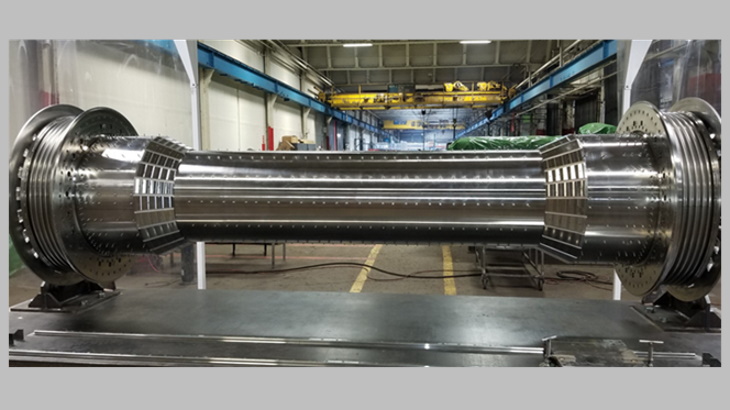Holtec supplies key component for US fusion reactor
Holtec International has completed the fabrication and delivery of the Centre Stack Casing (CSC) for the Princeton Plasma Physics Laboratory's (PPPL's) National Spherical Torus Experiment-Upgrade (NSTX-U), a precursor to commercial nuclear power based on nuclear fusion.

The Centre Stack Casing for the NSTX-U (Image: Holtec)
Holtec noted the fusion reactor must produce high performance plasma with low-cost magnetic fields, which required the CSC to be designed and fabricated with exceedingly tight tolerances to meet exacting metrology and magnetic permeability requirements.
The CSC will provide the inner vacuum wall of the NSTX and structural support for plasma-facing components and coils that must endure temperatures of up to 10 million degrees Celsius.
Holtec said the challenging design demanded its weld engineers develop and qualify many unique welding procedures and tools to meet PPPL's requirements. Those procedures and tools were then rigorously implemented by Holtec's highly-skilled machinists and welders.
"To fabricate something of this calibre required expertise and weldments of the highest quality," said Holtec Director of Weld Technology Brian Farnsworth. "I am immensely proud of our team's dedication and diligence to produce this critical component which in our initial review appeared to be almost unachievable. This is a true testament to what Holtec's manufacturing organisation can achieve."
"This beautiful piece of inconel metal - which I fondly call 'the hedgehog' due to its stud-covered design - will hold the centre magnet of our flagship experiment, NSTX-U," said PPPL Lab Director Steve Cowley. "The casing is not only magnificent, but well-travelled: It was forged in Italy, machined in New Jersey, and assembled in Pittsburgh. Its final arrival to us at the Lab was a significant project milestone and will allow us to begin important recovery work."
Holtec Chief Strategy Officer Fritz Roegge added: "This project demonstrated Holtec's ability to leverage our state-of-the-art human and industrial capability beyond our core commercial fission reactor technologies to support emerging energy technologies such as fusion and to support US government customers."
The NSTX-U is the flagship fusion facility at the US Department of Energy's PPPL. The spherical device is shaped more like a cored apple than the doughnut-like shape of conventional tokamaks and can produce high-pressure plasmas - essential ingredients for fusion reactions - with relatively low-cost and cost-effective magnetic fields.
The NSTX-U has three main objectives: to explore the capability of the spherical facility to produce stable, high-performance plasmas with low-cost magnetic fields; to develop the understanding and tools required to start up and sustain such plasmas non-inductively, meaning without what is known as a 'solenoid' magnet to start the process; and to develop techniques to handle and control the waste heat from fusion reactions.
Researched and written by World Nuclear News
- China Institute of Atomic Energy
- Nuclear Power Institute of China
- Southwestern Institute of Physics
- China Nuclear Power Operation Technology Corporation, Ltd.
- China Nuclear Power Engineering Co., Ltd.
- China Institute for Radiation Protection
- Beijing Research Institute of Uranium Geology (BRIUG)
- China Institute of Nuclear Industry Strategy (CINIS)
- China Nuclear Mining Science and Technology Corporation


